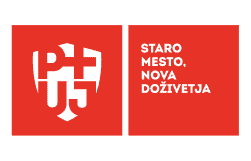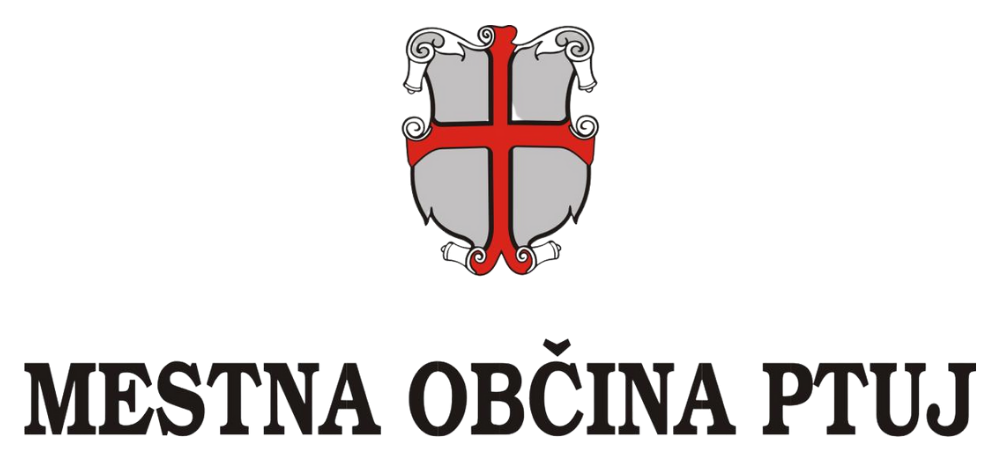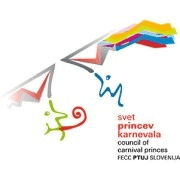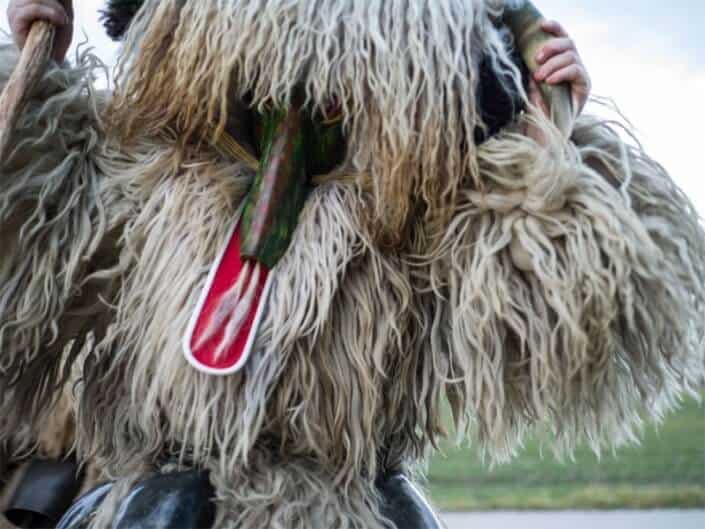


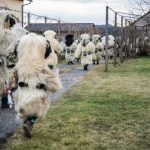



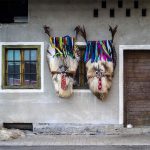
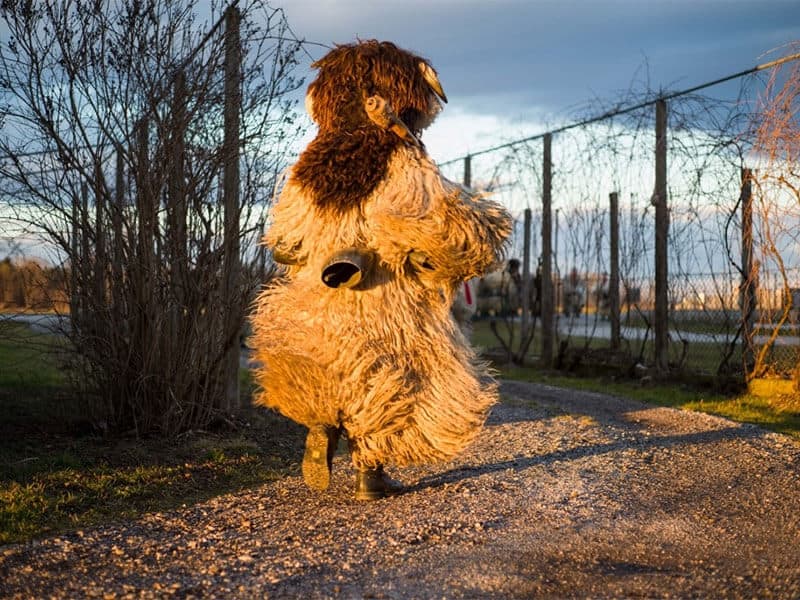

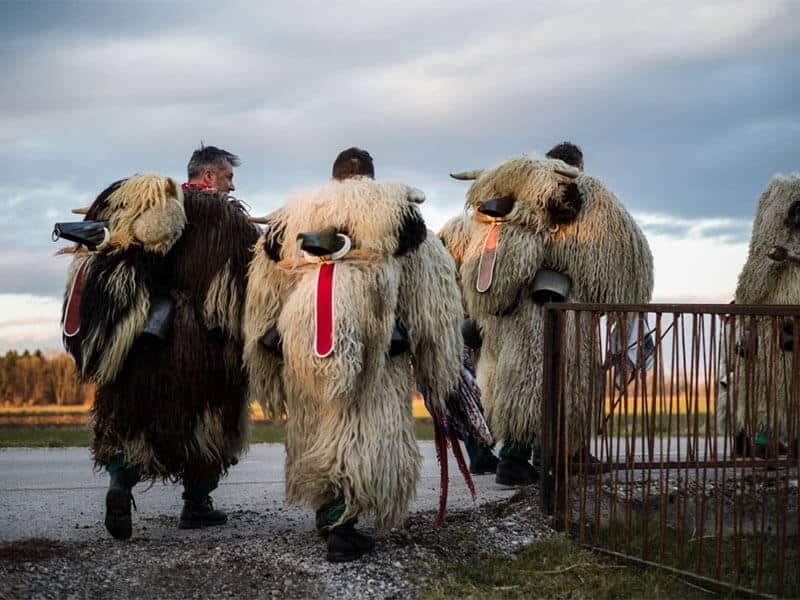
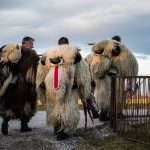
Great recognition from Unesco
In 2012, Kurents’ door-to-door rounds were entered in the Ministry of Culture’s Register of Intangible Cultural Heritage, where 21 organizations preserving this custom were listed. This was followed by Kurents’ recognition as a living masterpiece of national importance. The Government of the Republic of Slovenia proclaimed Kurents’ door-to-door rounds as intangible cultural heritage of national importance in late 2015. To emphasize the importance of Kurents for the region, 20 Kurent societies formed the Association of Kurent Societies, which has over 900 members and presented the nomination for entering this custom on UNESCO’s list.
Kurents’ door-to-door rounds are one of the best-known carnival traditions in Slovenia, and Kurent is one of the most common and popular carnival characters, which was first documented in 1880. According to popular belief, Kurents chase away everything bad and bring good luck and happiness. They are also one of the symbols of Slovenian identity, and up to one thousand Kurents perform their rituals at the Kurentovanje carnival every year.
This time, UNESCO considered 35 applications, including the cultural expression of Serbian wheel dancing and the Dutch skill of windmill management, so far a total of 365 protected entries from 108 countries have been added to the list. Representatives of ZRS Bistra, the Association of Kurent Societies, the Slovenian Ethnographic Museum as the Coordinator for the Protection of Intangible Heritage and the Directorate for Cultural Heritage at the Ministry of Culture participated in the preparation of the Slovenian nomination, which was submitted by the Ministry of Culture on behalf of the Republic of Slovenia in 2016. The assistance of the Embassy of the Republic of Slovenia was also indispensable in Paris.
Kurent - the most popular carnival character
The processions of Kurents are, after the Škofjeloški Passion Play, another element of Slovenian intangible cultural heritage listed on the Representative List. The Ministry of Culture, on behalf of the Republic of Slovenia, submitted the nomination for Lace Making in Slovenia for inclusion, while the Republic of Cyprus submitted the multinational nomination for Dry Stone Construction, which was prepared together by nine countries: Bulgaria, Cyprus, France, Greece, Croatia, Italy, Slovenia, Spain, and Switzerland. Both nominations were considered in 2018.
Kurents’ door-to-door rounds are one of the best-known carnival traditions in Slovenia, and Kurent is one of the most common and popular carnival characters, which was first documented in 1880. According to popular belief, Kurents chase away everything bad and bring good luck and happiness. They are also one of the symbols of Slovenian identity, and up to one thousand Kurents perform their rituals at the Kurentovanje carnival every year.






Great recognition from Unesco
In 2012, Kurents’ door-to-door rounds were entered in the Ministry of Culture’s Register of Intangible Cultural Heritage, where 21 organizations preserving this custom were listed. This was followed by Kurents’ recognition as a living masterpiece of national importance. The Government of the Republic of Slovenia proclaimed Kurents’ door-to-door rounds as intangible cultural heritage of national importance in late 2015. To emphasize the importance of Kurents for the region, 20 Kurent societies formed the Association of Kurent Societies, which has over 900 members and presented the nomination for entering this custom on UNESCO’s list.
Kurents’ door-to-door rounds are one of the best-known carnival traditions in Slovenia, and Kurent is one of the most common and popular carnival characters, which was first documented in 1880. According to popular belief, Kurents chase away everything bad and bring good luck and happiness. They are also one of the symbols of Slovenian identity, and up to one thousand Kurents perform their rituals at the Kurentovanje carnival every year.
This time, UNESCO considered 35 applications, including the cultural expression of Serbian wheel dancing and the Dutch skill of windmill management, so far a total of 365 protected entries from 108 countries have been added to the list. Representatives of ZRS Bistra, the Association of Kurent Societies, the Slovenian Ethnographic Museum as the Coordinator for the Protection of Intangible Heritage and the Directorate for Cultural Heritage at the Ministry of Culture participated in the preparation of the Slovenian nomination, which was submitted by the Ministry of Culture on behalf of the Republic of Slovenia in 2016. The assistance of the Embassy of the Republic of Slovenia was also indispensable in Paris.
Kurent - the most popular carnival character
According to the Škofja Loka Passion, the Kurent walks are the second unit of Slovenian intangible cultural heritage inscribed on the Representative List. This year, the Ministry of Culture, on behalf of the Republic of Slovenia, submitted the nomination Lacemaking in Slovenia, and the Republic of Cyprus the multinational nomination Drywall Construction, which was prepared by nine countries: Bulgaria, Cyprus, France, Greece, Croatia, Italy, Slovenia, Spain and Switzerland. The nominations will be considered in 2018.
The Kurent procession is one of the most prominent traditional carnival customs in Slovenia. Kurent is the most popular and recognizable carnival character, which has been documented since at least 1880. symbols of Slovene identity, and up to a thousand Kurents can be seen at the Kurentovanje in Ptuj during the performance of their ritual.
Kurents’ Door-to-Door Rounds on Prestigious Unesco List
Kurent is part of the world's important treasures
Great recognition from Unesco
Kurent - the most popular carnival character
UNESCO (United Nations Educational, Scientific and Cultural Organization) added door-to-door rounds of Kurents/Korants to its Representative List of the Intangible Cultural Heritage of Humanity in 2017. Entry on Unesco’s list is certainly extremely important, not only for preserving the regional ethnographic heritage, but also for raising Ptuj’s international profile. Nowhere else in Slovenia or wider you will find such a diversity of traditional folk carnival characters, however Kurent still occupies the central role among them. The fact that the biggest open event in the country (Kurentovanje) is named after this character speaks for itself.
Traditional ethnographic characters
Masks are so widely spread that they hold a significant place in the history of the mankind. For centuries people have believed that the use of masks could help to make connections with the world beyond, with demons, gods, and ancestors’ spirits. Their driving force was to understand and influence natural and social phenomena. The celebration of the carnival goes back to the pagan period, before Christianity, when people celebrated the forthcoming spring and the inevitable end of the winter by performing the rituals of fertility and by magic of masks. Although later Christianity felt absolutely disinclined to this pagan performance, it could never really uproot the masquerading. To be preserved the carnival took place at the beginning of the 40-day Lent preceding Easter; in fact Lent lasts 46 days as the first day is Ash Wednesday. After the period of merry-making, excessive eating and drinking which end on Shrove Tuesday at midnight, begins the period of fasting.
Masks and masquerading which have come into existence through various historical periods, can nowadays be divided into traditional masks with magic power, and contemporary carnival masks criticising and mocking different events happening in everyday life. In Slovenia, the Ptuj and Drava Fields, Haloze and Slovenske Gorice hills represent the area which deserves special attention for the number and variety of traditional carnival masks.
